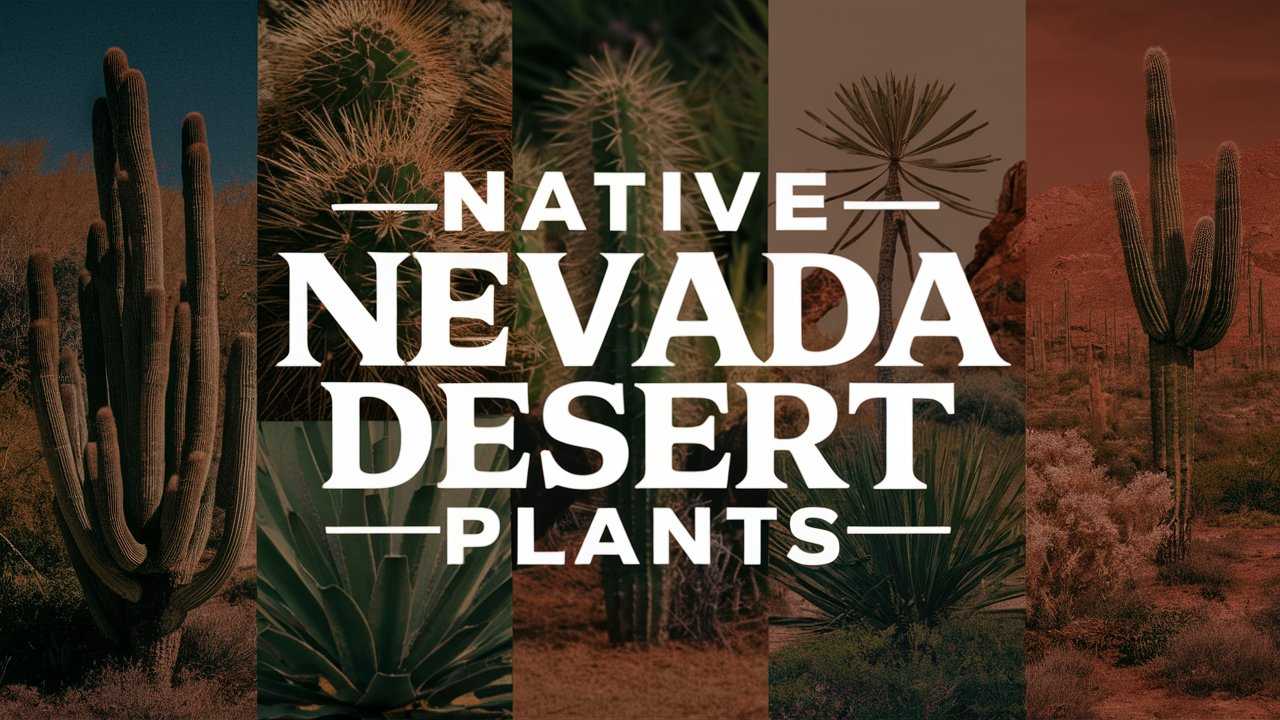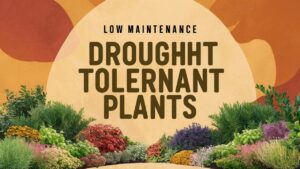The Nevada desert landscape is characterized by its stunning array of flora that has adapted to thrive in arid conditions. Among these are resilient trees that provide essential habitat and contribute to the ecosystem’s diversity.
Nevada Native Trees
Utah Juniper
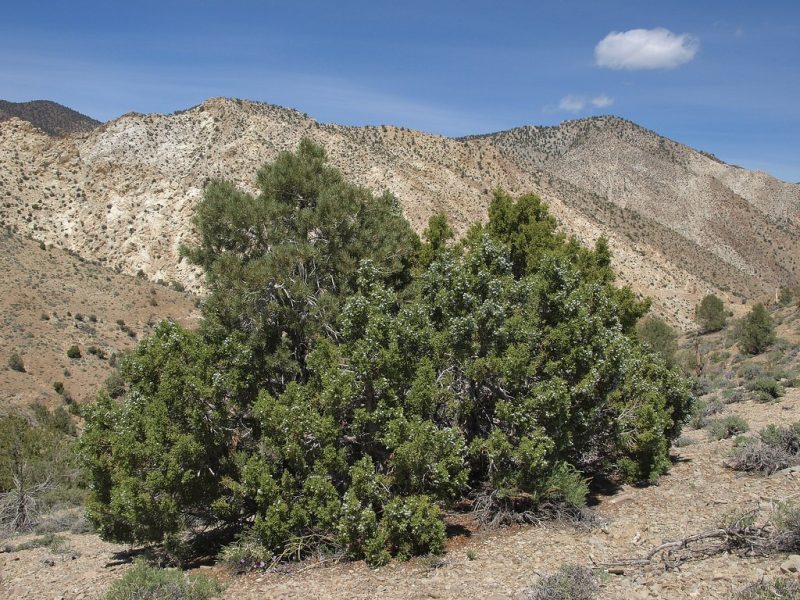
The Utah Juniper (Juniperus osteosperma) is a remarkable tree that epitomizes the spirit of survival in Nevada’s desert. This species often prefers rocky, well-drained soils and can thrive at elevations ranging from 4,000 to 8,500 feet. Its scale-like leaves and rugged bark provide not only aesthetic appeal but also a means of conserving water during the dry summer months.
The Utah Juniper can grow as a bush or stand tall as a tree, reaching heights of up to 30 feet. Its strong root system allows it to anchor itself firmly while extracting moisture from deep underground. One of the fascinating aspects of this tree is its contribution to local wildlife; its berries are a crucial food source for many birds and mammals, particularly in the winter when food is scarce. These berries, though bitter when raw, can be processed into jams or used as flavoring, showcasing the tree’s versatility.
Moreover, the cultural significance of the Utah Juniper cannot be understated. Native American tribes historically utilized its wood for construction, tools, and ceremonial purposes. The aromatic nature of the wood made it ideal for burning, and its essential oils have been used in traditional medicine. Understanding the Utah Juniper’s ecological importance and cultural heritage enhances appreciation for this resilient tree.
Rocky Mountain Maple
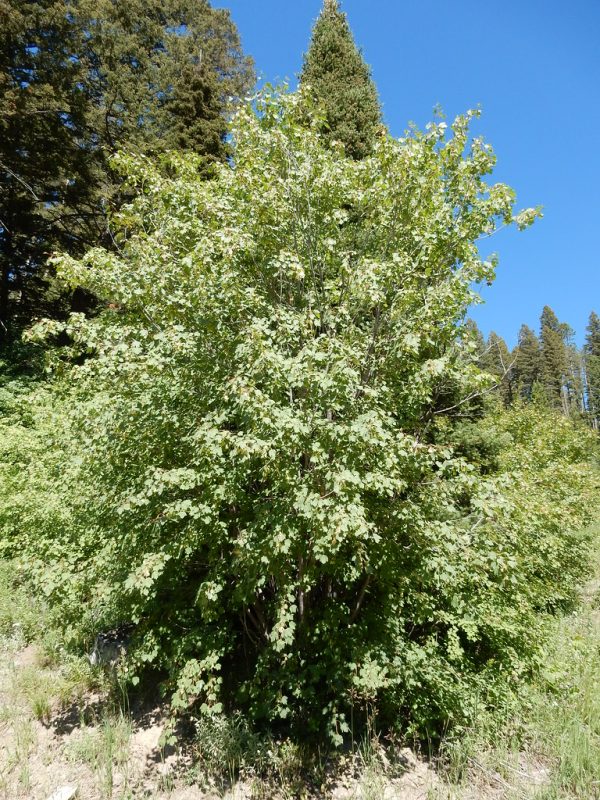
While often associated with cooler, more temperate regions, the Rocky Mountain Maple (Acer glabrum) finds a unique niche in Nevada, particularly in wetter canyons and riparian zones. This adaptable deciduous tree, reaching heights of about 20 to 30 feet, typically features a dense canopy and distinctive lobed leaves that change to vibrant shades of red and orange in the fall, a spectacle that starkly contrasts against the desert’s subdued palettes.
Growing in clusters, Rocky Mountain Maples thrive in moist environments, indicating the presence of water in otherwise dry landscapes. Their adaptability to lower light conditions allows them to flourish in areas shaded by larger trees. The presence of this maple species can enhance biodiversity, as its foliage provides essential cover for birds and small mammals, while its flowers attract various pollinators.
In addition to its ecological contributions, the Rocky Mountain Maple has cultural significance. Its wood is prized for crafting due to its fine grain and ability to take on beautiful finishes, making it a favorite among artisans and builders alike. The presence of this tree species in Adam’s Canyon or around the banks of the Virgin River not only marks its ecological resilience but also highlights the importance of preserving such unique ecosystems within Nevada’s deserts.
Western Redbud

The Western Redbud (Cercis occidentalis) is a strikingly beautiful tree that brings a burst of color to Nevada’s arid landscapes, particularly in the spring. Blooming with vibrant pink to purple flowers, this species not only grabs attention but also serves vital ecological functions. Typically found in canyons and along riverbanks, the Western Redbud prefers well-drained soils and often associates with other native plants in shaded environments.
This deciduous tree can grow anywhere from 10 to 20 feet in height, and its heart-shaped leaves create an attractive canopy throughout the growing season. The flowers, which bloom before the leaves emerge, are an essential resource for early pollinators such as bees. The subsequent seed pods, which develop after flowering, provide food for various birds and mammals, thereby contributing to the food web.
Additionally, the Western Redbud is celebrated for its role in erosion control, as its root system effectively stabilizes soil in areas prone to runoff. Gardeners and landscape designers have recognized its ornamental value and often incorporate it into native landscaping projects. In Nevada, where the harsh climate can challenge plant growth, the Western Redbud represents the harmony between beauty and functionality.
Nevada Native Shrubs
Shrubs are an integral component of Nevada’s desert ecosystems, providing habitat, food, and stability to the arid environment. The state is home to a variety of native shrub species, each uniquely adapted to survive under intense sun and limited moisture.
Red-Osier Dogwood
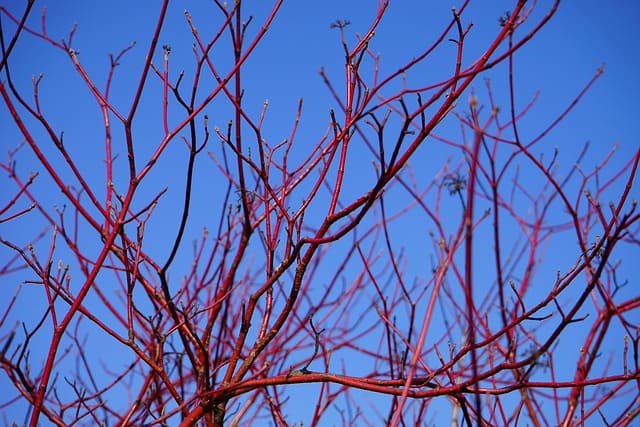
The Red-Osier Dogwood (Cornus sericea), known for its vibrant red stems and striking white flowers, is an important shrub that flourishes in moist areas across Nevada, typically found along the edges of rivers and streams. This deciduous shrub grows up to 6 feet tall and features glossy green leaves that turn a rich reddish-purple in the fall, making it a beautiful addition to the landscape.
One of the Red-Osier Dogwood’s key benefits is its ability to stabilize soil and reduce erosion, particularly along waterways. Its dense root system anchors the soil, preventing runoff and maintaining the quality of aquatic habitats. Moreover, its flowers attract various pollinators such as bees and butterflies, while its berries serve as food for birds and other wildlife during the fall and winter months.
In addition to its environmental importance, the Red-Osier Dogwood has been utilized by indigenous peoples for its flexible stems, which were traditionally woven into baskets and used for crafts. This historical relationship underscores the significance of this shrub not just in terms of ecology but also in the cultural heritage of Nevada’s native communities.
Grape Soda Lupine
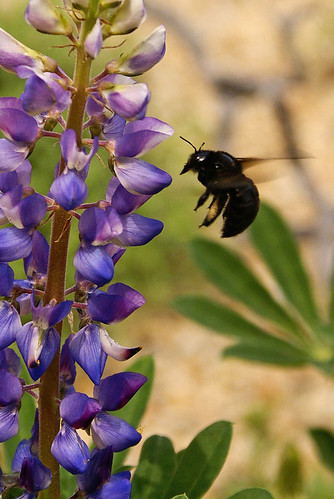
The Grape Soda Lupine (Lupinus succulentus) is a captivating herbaceous perennial often found in the sandy soils of Nevada’s desert regions. Named for its striking clusters of blue-purple flowers that emit a sweet fragrance reminiscent of grape soda, this plant is a delight for both the eyes and the senses. The Grape Soda Lupine typically blooms from early spring to late summer, creating vibrant patches that attract pollinators, including bees and butterflies, while providing a pivotal food source during a time when resources may be limited.
This species possesses nitrogen-fixing abilities, meaning it can convert atmospheric nitrogen into organic compounds that enrich the soil. This feature is particularly beneficial in desert ecosystems, where nutrient availability can be a limiting factor for plant growth. By enhancing soil quality, the Grape Soda Lupine supports a diverse range of plant communities, making it a crucial player in maintaining ecological balance.
Moreover, the lush foliage of the Grape Soda Lupine not only offers aesthetic appeal but also serves as habitat cover, giving protection to smaller wildlife. Its role in both the soil health and wildlife support underscores its importance as a native plant that complements the intricate web of life in Nevada’s deserts.
Blue Elderberry
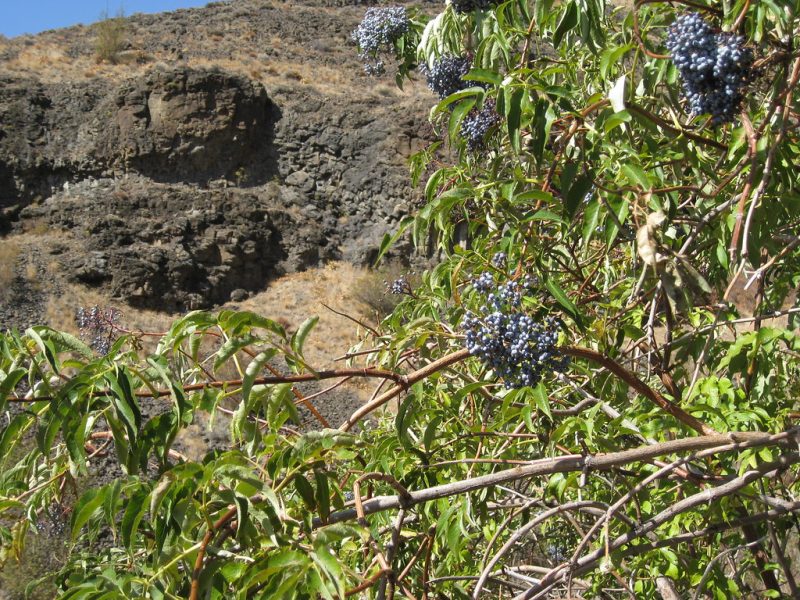
The Blue Elderberry (Sambucus nigra subsp. caerulea) is a native shrub that thrives in the moist environments of Nevada, often found near rivers, streams, and other riparian areas. Known for its multi-stemmed growth habit, this shrub reaches heights of 10 to 12 feet and produces large, flat clusters of creamy white flowers in the spring that transition to dark blue, almost black berries by late summer.
The berries of the Blue Elderberry are not only a critical food source for birds and various mammals but they are also rich in antioxidants and vitamins, offering a nutritious option for humans when properly processed. Historically, Native American tribes utilized the berries to make jellies, syrups, and wines, showcasing the plant’s cultural significance and versatility. Additionally, the flowers were commonly used in traditional medicines for their purported health benefits.
Beyond its edible and medicinal properties, the Blue Elderberry plays an important role in maintaining the health of its ecosystem. Its extensive root system helps stabilize soil along riverbanks, preventing erosion and providing essential habitat for aquatic species. By attracting pollinators, it supports overall biodiversity within its habitat. This resilience and adaptability underscore why the Blue Elderberry remains a valued native plant in Nevada’s diverse desert landscape.
Purple Sage

Purple Sage (Salvia dorrii) is an iconic plant of the Nevada desert, renowned for its aromatic leaves and stunning purple flowers that bloom in the late spring and early summer. This perennial shrub typically grows to a height of 1 to 3 feet, forming dense patches that contribute to the picturesque wildflower displays across the desert landscape. Its fuzzy, gray-green leaves are not only visually pleasing but also play a crucial role in reducing water loss through transpiration, enabling the plant to thrive in warm, dry conditions.
The nectar-rich flowers of Purple Sage attract a variety of pollinators, including bees, butterflies, and hummingbirds, making it a vital resource for these species during their active seasons. Additionally, the plant produces small seeds that serve as food for birds and small mammals, enhancing its role in the local ecosystem.
Culturally, Purple Sage has significance among Native American tribes, who have utilized the plant for its medicinal properties and as a flavoring agent in traditional dishes. Its symbolic value is also noteworthy, often representing resilience and adaptability in the face of adversity. The Purple Sage not only enhances the biodiversity of Nevada’s desert flora but also enriches the cultural fabric of the region.
Common Yarrow
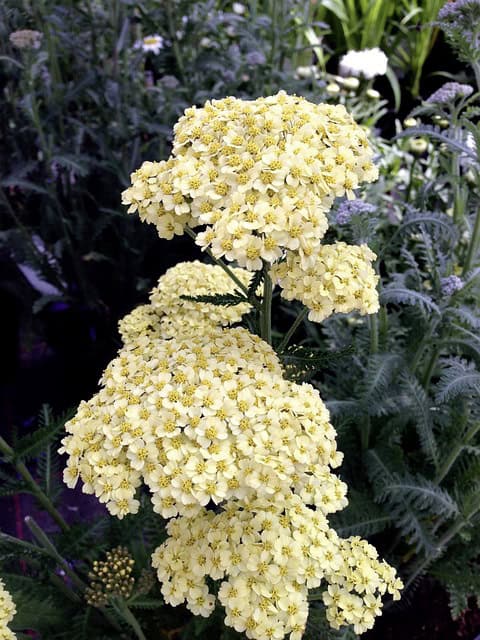
Common Yarrow (Achillea millefolium) is a versatile and hardy perennial plant that thrives in various environments, including the arid regions of Nevada. With its feathery, fern-like leaves and clusters of small, white to pale yellow flowers, this plant is not only aesthetically striking but also known for its remarkable adaptability. Yarrow is found in open meadows, along roadways, and in desert washes, showcasing its ability to grow in poor soil conditions.
Historically, Common Yarrow has been valued for its medicinal properties, often referred to as a “wound herb” due to its ability to promote healing. Native American tribes and early settlers used it to treat cuts, fevers, and digestive issues, relying on its anti-inflammatory and antiseptic qualities. The plant’s rich historical and medicinal uses continue to inspire interest among herbalists and botanists alike.
Furthermore, Common Yarrow contributes to the desert ecosystem by attracting a variety of beneficial insects, including ladybugs and lacewings, which act as natural pest controllers. Its deep root system improves soil structure and health, preventing erosion and promoting moisture retention in its surroundings. As a pioneer species, Yarrow plays an essential role in establishing plant communities in harsh environments, making it a cornerstone of Nevada’s native plant diversity.
Desert Globemallow
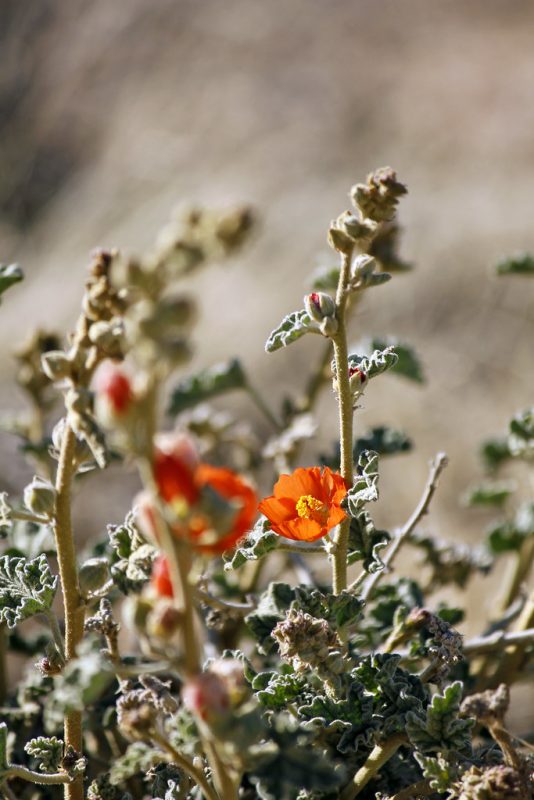
Desert Globemallow (Sphaeralcea ambigua) is a stunning perennial that adds a burst of orange and coral color to the desert landscape during its blooming season, usually from spring through early summer. With its characteristic round flowers and tall, spiky growth habit reaching up to 2 feet in height, this plant is not only beautiful but also highly adapted to the arid conditions of Nevada. It thrives in sandy or rocky soils and can often be found in disturbed areas such as roadsides and washes.
The resilience of Desert Globemallow is evident in its drought tolerance; its deep root system allows it to access moisture from deeper soil layers, making it a survivor in the harshest conditions. The plant is highly attractive to pollinators, including bees and butterflies, playing a vital role in supporting local ecosystems. The flowers also develop seedpods that produce tiny, wind-dispersed seeds—ensuring reproduction and the continuation of the species.
In addition to its ecological benefits, Desert Globemallow has potential applications in erosion control and revegetation projects due to its hardy nature. Its ability to thrive in challenging habitats makes it an excellent candidate for landscaping in arid regions, as it requires minimal maintenance and is resistant to many common pests.
Nevada Native Flowers
Nevada’s native flowers are a testament to the resilience and beauty of life in challenging environments. Each species has evolved distinct characteristics that enable it to survive desert conditions, including extreme temperatures, limited water availability, and nutrient-poor soils. From the vibrant blooms of lupines and globemallows to the elegant flowering stalks of penstemons, these plants not only enhance the visual appeal of the landscape but also support local wildlife.
Sticky Purple Geranium
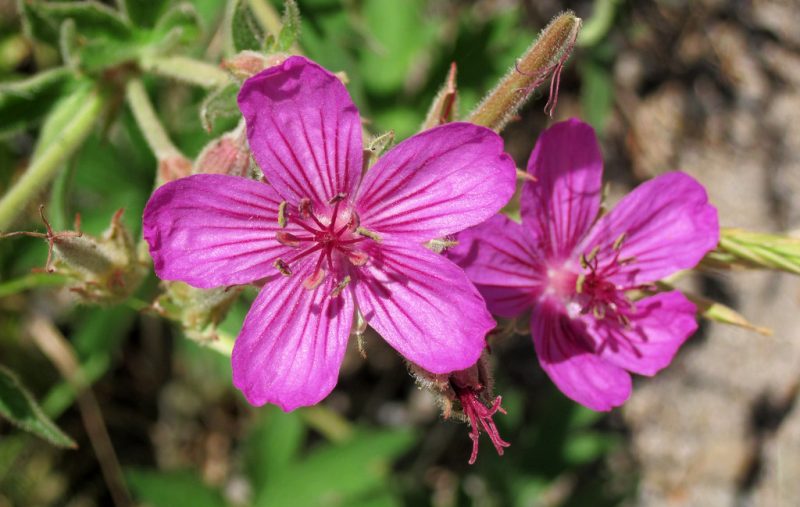
Sticky Purple Geranium (Geranium viscosissimum) is a perennial wildflower that brightens Nevada’s desert regions with its striking purple blossoms. Known for its sticky, resinous leaves, this plant often grows in meadows and open, disturbed areas, thriving in well-drained soils. The leaves and stems are covered in fine, glandular hairs that contribute to its sticky texture, which can deter herbivores and prevent water loss, an important adaptation in arid climates.
Blooming primarily in late spring to early summer, the Sticky Purple Geranium presents delicate flowers that attract various pollinators, including bumblebees and butterflies. The flower structure is designed in a way that facilitates pollination, as the arrangement allows easy access for these beneficial insects. After pollination, the plant produces small, unique seed capsules that are reminiscent of tiny cranes— a feature that has led to its nickname “crane’s bill.”
Beyond its role in the ecosystem, Sticky Purple Geranium has also been used traditionally in herbal medicine due to its astringent properties. While some Native American tribes used the plant to treat inflammation and other ailments, today, it’s appreciated not only for its ecological contributions but also for its ornamental value when grown in native gardens and landscapes.
Rocky Mountain Penstemon
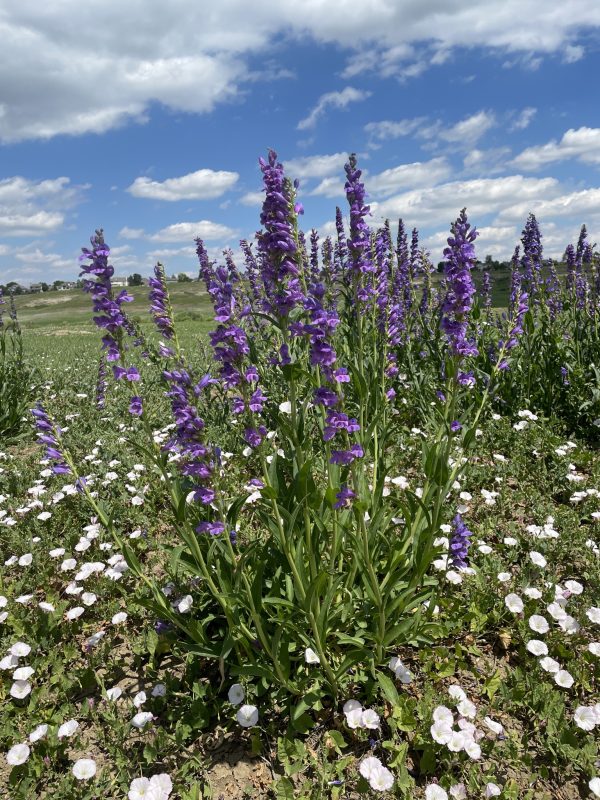
The Rocky Mountain Penstemon (Penstemon strictus) is another beautiful perennial flower that graces Nevada’s desert landscapes. Typically found in rocky soils, sagebrush areas, and along foothills, this species stands out with its tall spikes adorned with vibrant, tubular flowers in shades of deep blue to purple. This striking appearance attracts a wide range of pollinators, particularly bees and hummingbirds, which are drawn to the color and shape of the flowers.
Flowering during late spring and early summer, Rocky Mountain Penstemon is an important nectar source for many species during a time of year when resources can be scarce. The robust structure of the flowers and their proximity to one another allows for efficient pollination, essential for the reproductive success of the plant. Additionally, its ability to thrive in rocky, well-drained soils helps to stabilize these areas, preventing erosion and promoting healthy ecosystems.
Rocky Mountain Penstemon is not only appreciated for its ecological benefits but also for its ornamental value. Gardeners often plant it in native and xeriscape gardens, as it requires minimal water once established and can thrive in poor soils. Its vibrant blossoms add color and texture to desert landscapes, supporting biodiversity while promoting environmentally friendly gardening practices.
Desert Marigold
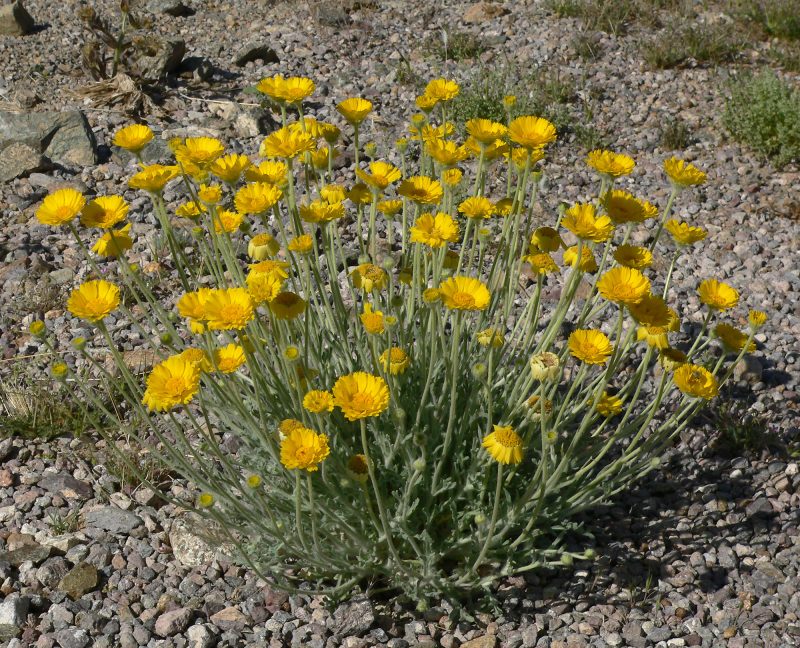
The Desert Marigold (Baileya multiradiata) is a perennial herb that brings vibrant splashes of yellow to Nevada’s arid landscapes. This drought-tolerant flower blooms from early spring through fall, with bright, daisy-like petals that can reach 1 to 3 inches in diameter. Found primarily in open sandy areas, this plant thrives in Nevada’s challenging desert conditions, showcasing its ability to survive with minimal water and nutrient availability.
The plant’s adaptability is reflected in its thick, hairy leaves, which reduce water loss by trapping moisture and providing shade. These features allow Desert Marigold to effectively cope with the scorching sun of southern Nevada, making it a resilient player in the desert ecosystem. As a valuable source of nectar, the blooms attract a variety of pollinators, including bees and butterflies, which are essential for the reproduction of many desert plants.
Furthermore, Desert Marigold is often utilized in restoration projects and xeriscaping due to its hardiness and low maintenance requirements. It is commendable for not only enhancing the aesthetics of a landscape but also for preventing soil erosion and improving soil quality. Its extensive root system helps stabilize sandy soils, contributing to the overall health of the desert ecosystem.
Nevada Native Grasses
Nevada’s native grasses play a critical role in the desert ecosystem, offering essential ground cover, preventing soil erosion, and providing habitat and forage for wildlife. Typically more resilient to heat and aridity than non-native species, these grasses are well-adapted to the unique conditions of Nevada’s deserts. Grasses, such as Indian Ricegrass, Alkali Sacaton, and Blue Grama, are integral to maintaining soil health, improving moisture retention, and supporting biodiversity within the desert environment.
Blue Grama
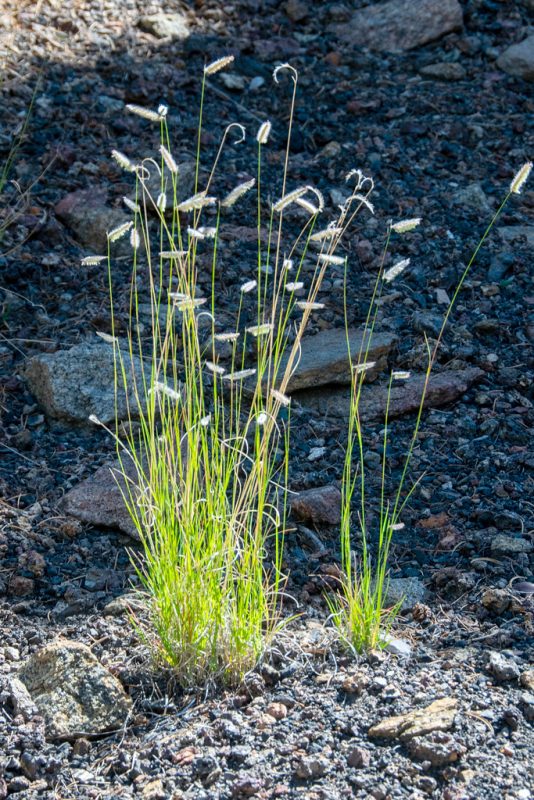
Blue Grama (Bouteloua gracilis) is a quintessential native grass in Nevada, easily recognized by its distinctive flower spikes that resemble eyelashes. This perennial grass typically grows between 1 to 2 feet tall and forms dense clumps, thriving in a variety of soils, including sandy and clay formations. Known for its resilience, Blue Grama is well adapted to the dry and windy conditions of the desert, often flourishing where other species struggle.
The foliage of Blue Grama is gray-green and fine-textured, providing a soft visual appeal while remaining robust against environmental stressors. Its flowering occurs in summer, producing small, wind-pollinated seeds that are an important food source for birds and small mammals. This grass also provides cover for various wildlife species, contributing to the overall biodiversity within the habitat.
Moreover, Blue Grama is often used in erosion control projects due to its ability to thrive with minimal water and its dense root system, which stabilizes soil. It is also a popular choice for sustainable landscaping and native gardens, as it requires less irrigation and no fertilizers compared to non-native grass species.
Buffalograss

Buffalograss (Bouteloua dactyloides) is a perennial grass native to the central plains of North America but is also prominent in the desert regions of Nevada. Renowned for its drought resistance, Buffalograss is a low-growing, warm-season grass that typically reaches heights of 6 to 12 inches. Its blue-green blades are fine and dense, forming a sod that resists the harsh sunlight and minimizes soil erosion—a critical adaptation in the barren landscapes of the Nevada desert.
This grass flourishes in well-drained, open environments, making it an ideal candidate for lawns and landscaping in arid regions. Buffalograss requires significantly less water than many traditional turf grasses, so it is often used in xeriscaping projects designed to conserve water resources. Its deep root system allows it to access moisture deep in the soil, enabling it to survive long periods without rainfall.
Moreover, Buffalograss plays an important ecological role by providing forage for grazing animals such as bison and various bird species. The dense mat formed by its growth also serves as a habitat for ground-nesting birds and small mammals, contributing to the overall biodiversity of the desert ecosystem.
Indian Ricegrass
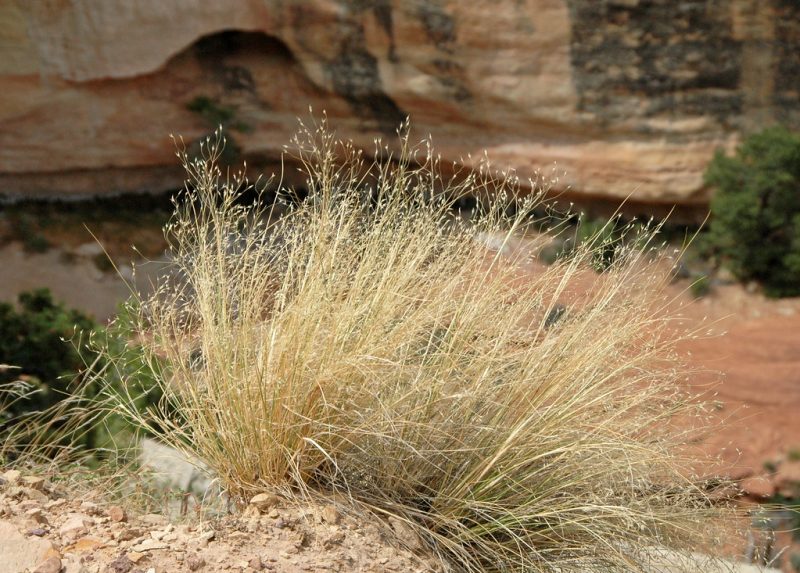
Indian Ricegrass (Achnatherum hymenoides) is a key native grass that plays a significant role in Nevada’s desert landscapes. Characterized by its long, slender leaves and distinctive fluffy seed heads, this perennial grass can grow up to 30 inches tall, often found in sandy and rocky soils of desert washes and foothill areas. Flourishing in both sunny and partially shaded locations, Indian Ricegrass demonstrates remarkable adaptability to various soil types and environmental conditions.
This grass species is particularly important for soil stabilization and erosion control. Its extensive and deep root system binds the soil together, preventing degradation in areas affected by harsh wind and water erosion. In addition to its ecological benefits, Indian Ricegrass produces edible seeds that have historically been a significant food source for Native American tribes. These seeds are high in protein and fiber, making them a valuable staple that has endured through generations.
Indian Ricegrass also supports a diverse array of wildlife. Its growth provides cover and nesting sites for birds while its seeds serve as a food source for many small mammals and birds. By fostering this native grass, land managers and conservationists can enhance habitat quality and support the overall health of the desert ecosystem.
Great Basin Rye
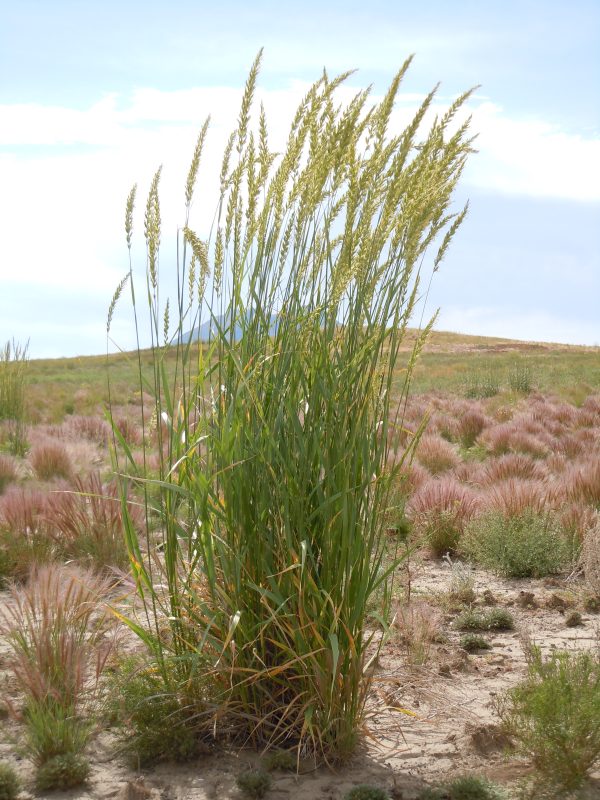
Great Basin Rye (Leymus cinereus), often called “wild rye,” is a grass of considerable importance in the Great Basin region, including Nevada. This perennial species can grow up to 4 feet tall and features a stiff, upright growth habit with silvery-blue leaves. Great Basin Rye is commonly found in riparian zones, meadows, and other areas where water is available, but it has adapted remarkably well to drier conditions, making it resilient in the desert environment.
One of the key features of Great Basin Rye is its ability to germinate and establish quickly after disturbances, such as fires or human activity. This fast growth not only aids in quickly stabilizing soil but also helps in suppressing invasive weeds that could threaten native plant communities. Great Basin Rye’s robust root system contributes to soil moisture retention and enhances nutrient cycling in the ecosystem.
Moreover, this grass serves as an essential forage resource for herbivores, including deer and livestock. Its nutritious foliage is often considered a valuable component in grazing systems throughout the high desert. Great Basin Rye also attracts a variety of pollinators and seed-eating birds, adding another layer of biodiversity to the native flora of the region.
Nevada Native Ground Covers
Native ground covers in Nevada are essential for preserving the integrity of the fragile desert ecosystem. They offer crucial protection against soil erosion, especially in areas prone to heavy rainfall or wind. By creating a dense layer of vegetation close to the ground, these plants help retain moisture in the soil and improve its structure, facilitating better water absorption and reducing runoff.
Moreover, Nevada’s native ground covers provide food and habitat for numerous insects and small animals, enriching the biodiversity of the region. As these plants grow, they also prevent the establishment of invasive species that threaten local ecosystems. The use of native ground covers in landscaping and restoration projects not only enhances aesthetic appeal but also supports the environmental health and resilience of Nevada’s desert landscapes.
Creeping Barberry
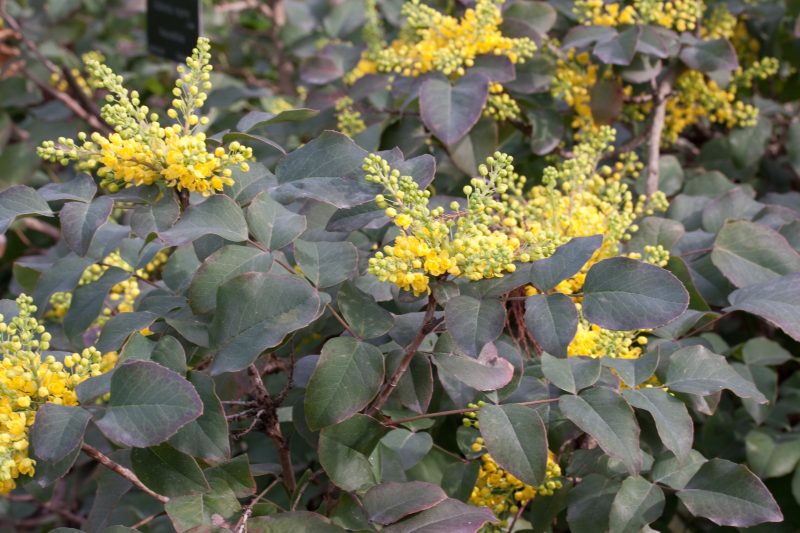
Creeping Barberry (Berberis repens) is a remarkable ground cover that thrives in Nevada’s arid conditions. This low-growing shrub typically reaches only about 1 foot in height and features wiry stems that spread out, forming a dense mat. Its thick, leathery leaves are evergreen, offering year-round greenery that helps sustain local ecosystems even during the harsh winter months.
One of the defining characteristics of Creeping Barberry is its ability to adapt to various soil types, particularly well-drained, rocky, or sandy soil, which is prevalent in many desert areas of Nevada. The plant produces small, yellow flowers in the spring that are not only attractive but also draw in pollinators such as bees and butterflies. Following the flowering period, Creeping Barberry develops blue-black berries, which serve as a vital food source for birds and other wildlife.
Beyond its ecological contributions, Creeping Barberry also has a practical application in landscaping. Its low, spreading habit makes it an excellent choice for erosion control on slopes and banks, while its resistance to drought ensures that it remains an attractive option for gardeners looking to create low-maintenance, native gardens. The intertwining branches also create a habitat for birds and small mammals, further enhancing its value in promoting biodiversity.
Dwarf Yarrow
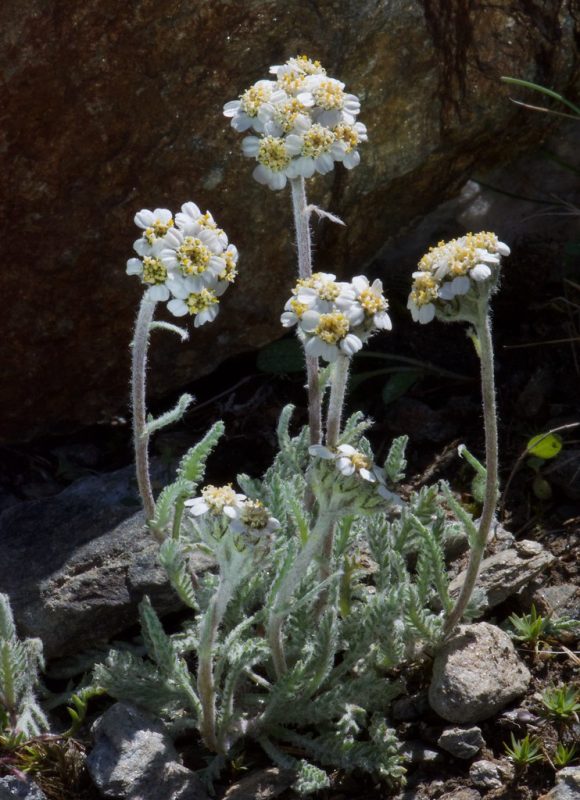
Dwarf Yarrow (Achillea millefolium var. septentrionalis) is another native ground cover that adds beauty and resilience to Nevada’s desert landscapes. This perennial herb typically grows about 6 to 12 inches tall and is recognized for its finely dissected, fern-like leaves along with clusters of small, flat-topped white flowers that bloom from late spring to early summer. Its delicate blossoms attract various pollinators, including bees, butterflies, and even hummingbirds, contributing to the overall vitality of the local ecosystem.
Dwarf Yarrow demonstrates remarkable adaptability; it thrives in well-drained soils and can establish itself in both rocky and sandy habitats, making it a perfect candidate for harsh desert environments. Its deep root system aids in moisture retention, allowing it to survive in conditions where water is scarce, a critical trait for any desert plant.
In addition to its ecological benefits, Dwarf Yarrow is known for its medicinal properties. Traditionally, it has been used by Indigenous peoples for its anti-inflammatory and wound-healing qualities. This plant’s high tolerance for drought and versatility also make it a favored choice for xeriscaping and native plant gardens, showcasing its ornamental beauty alongside its practical advantages.


